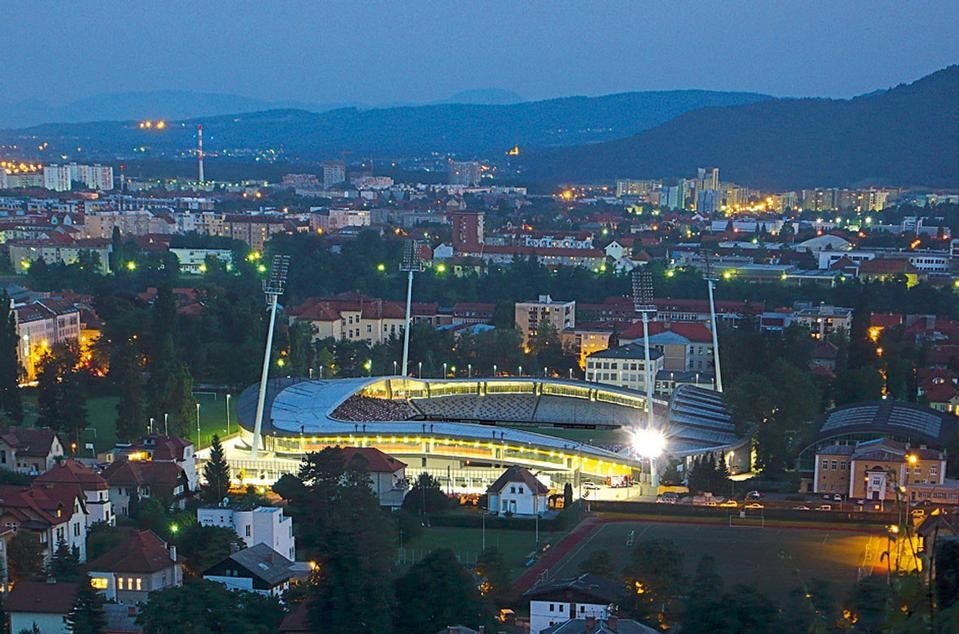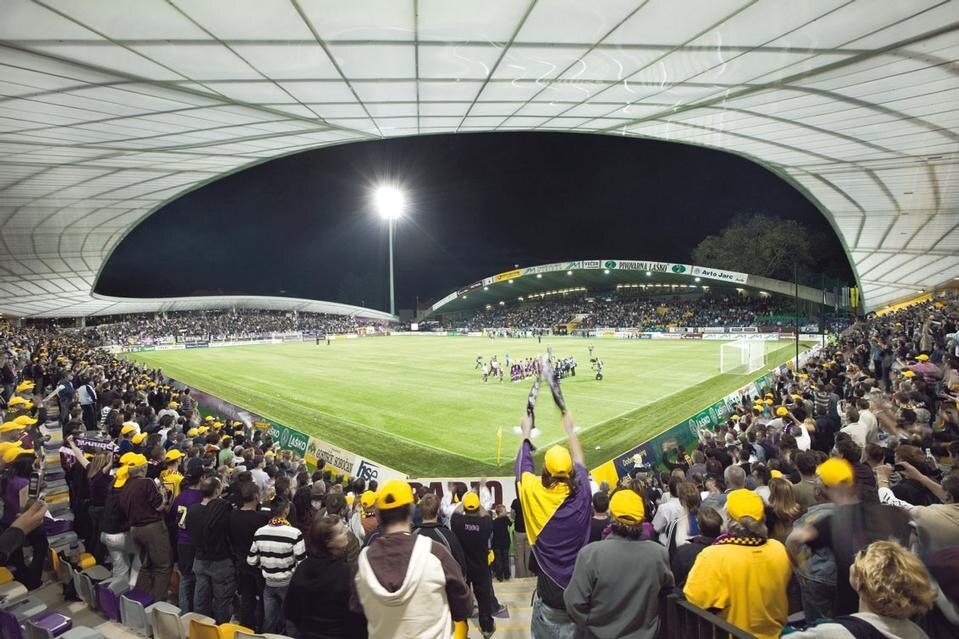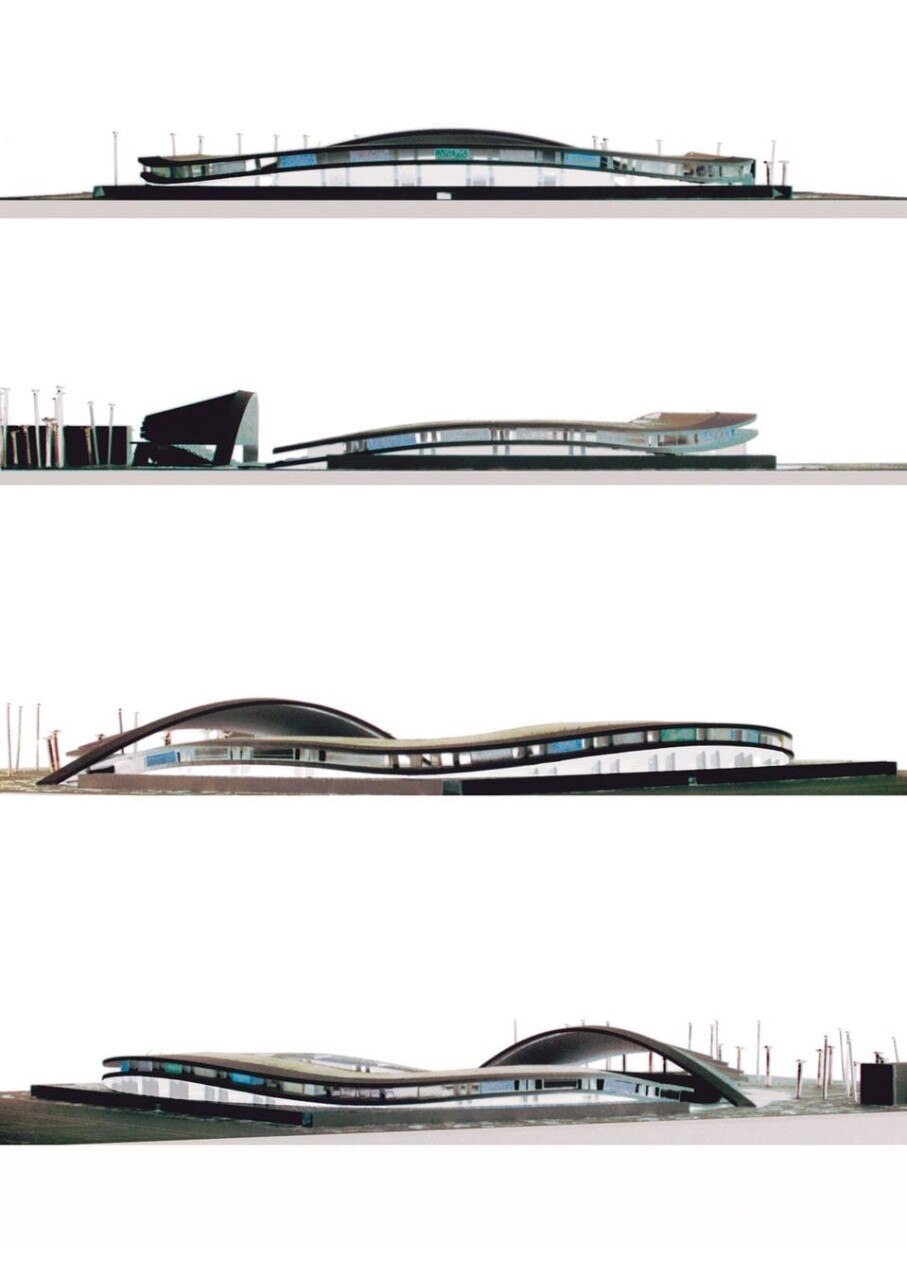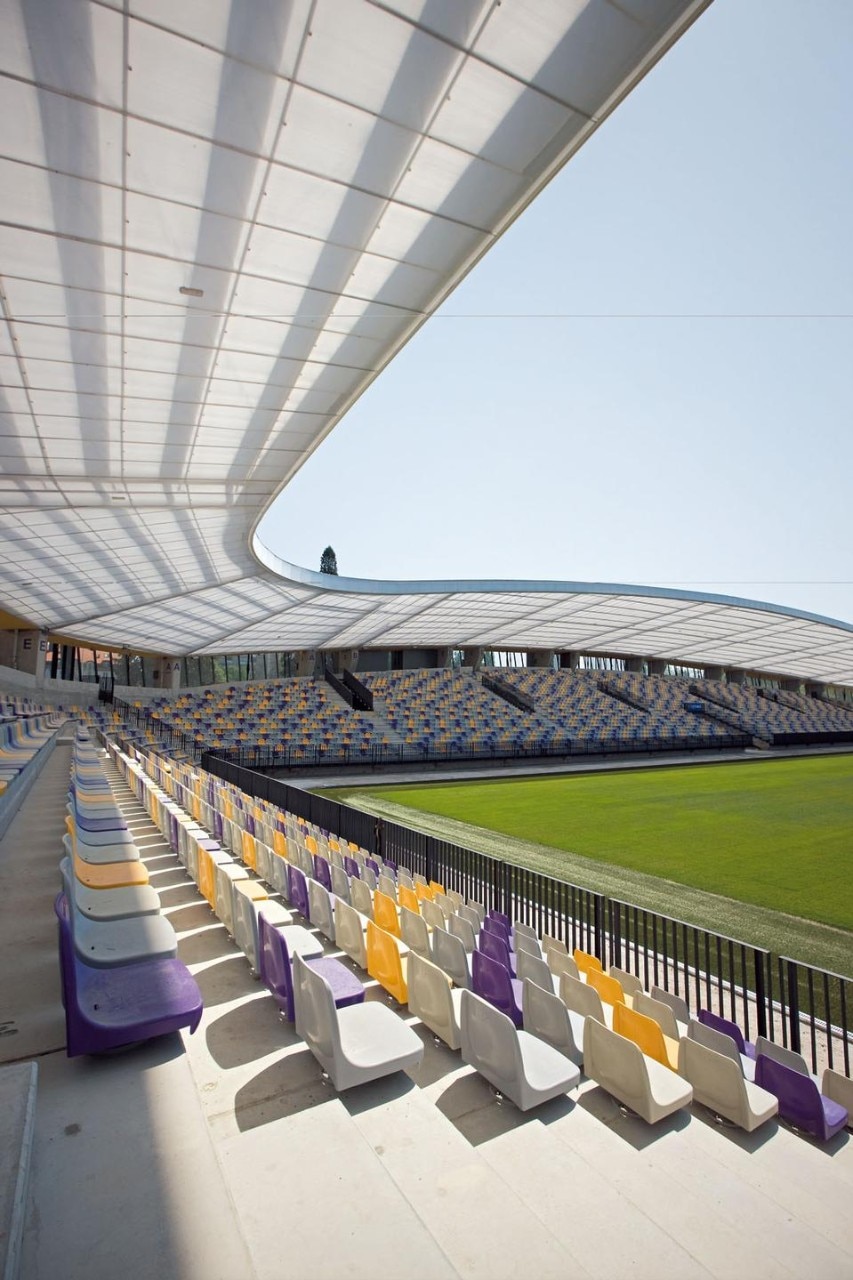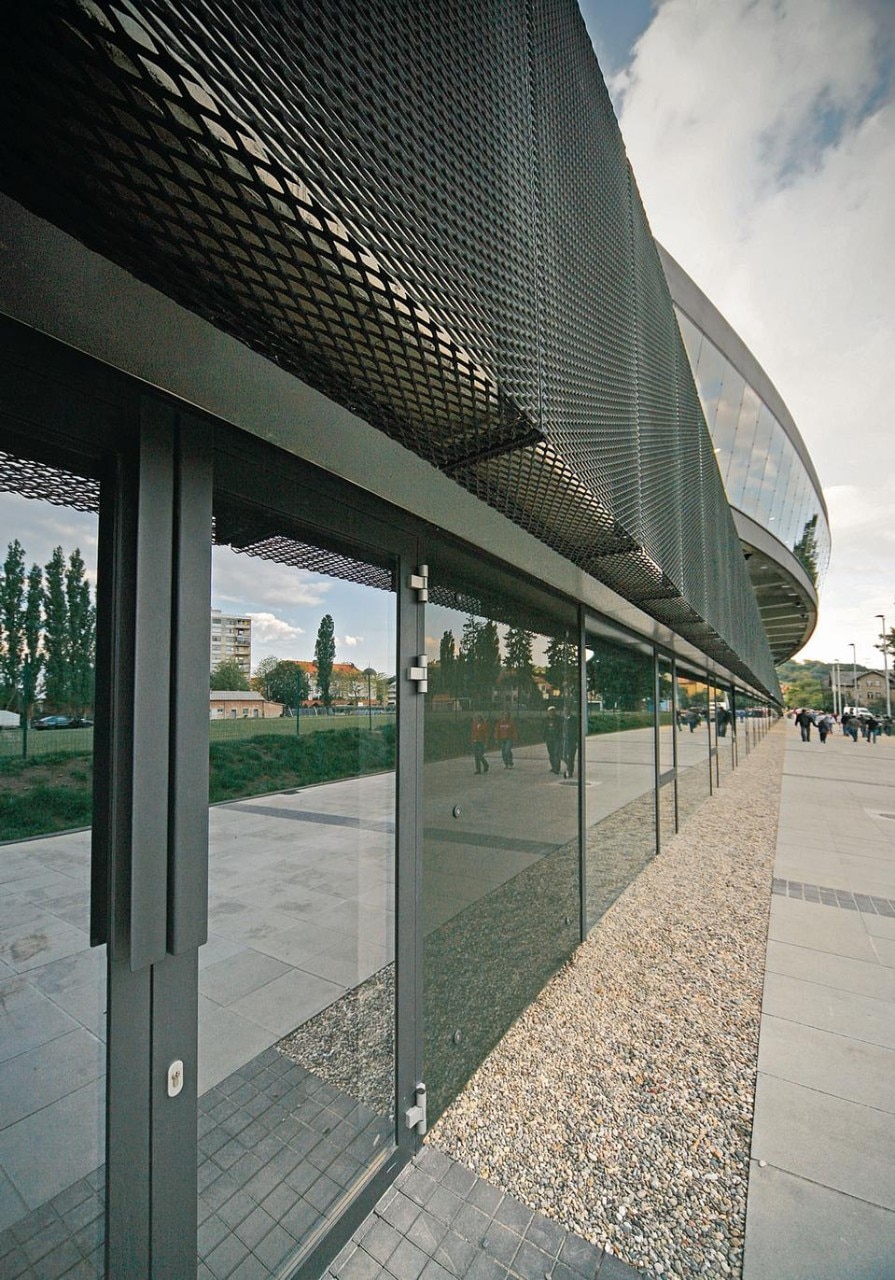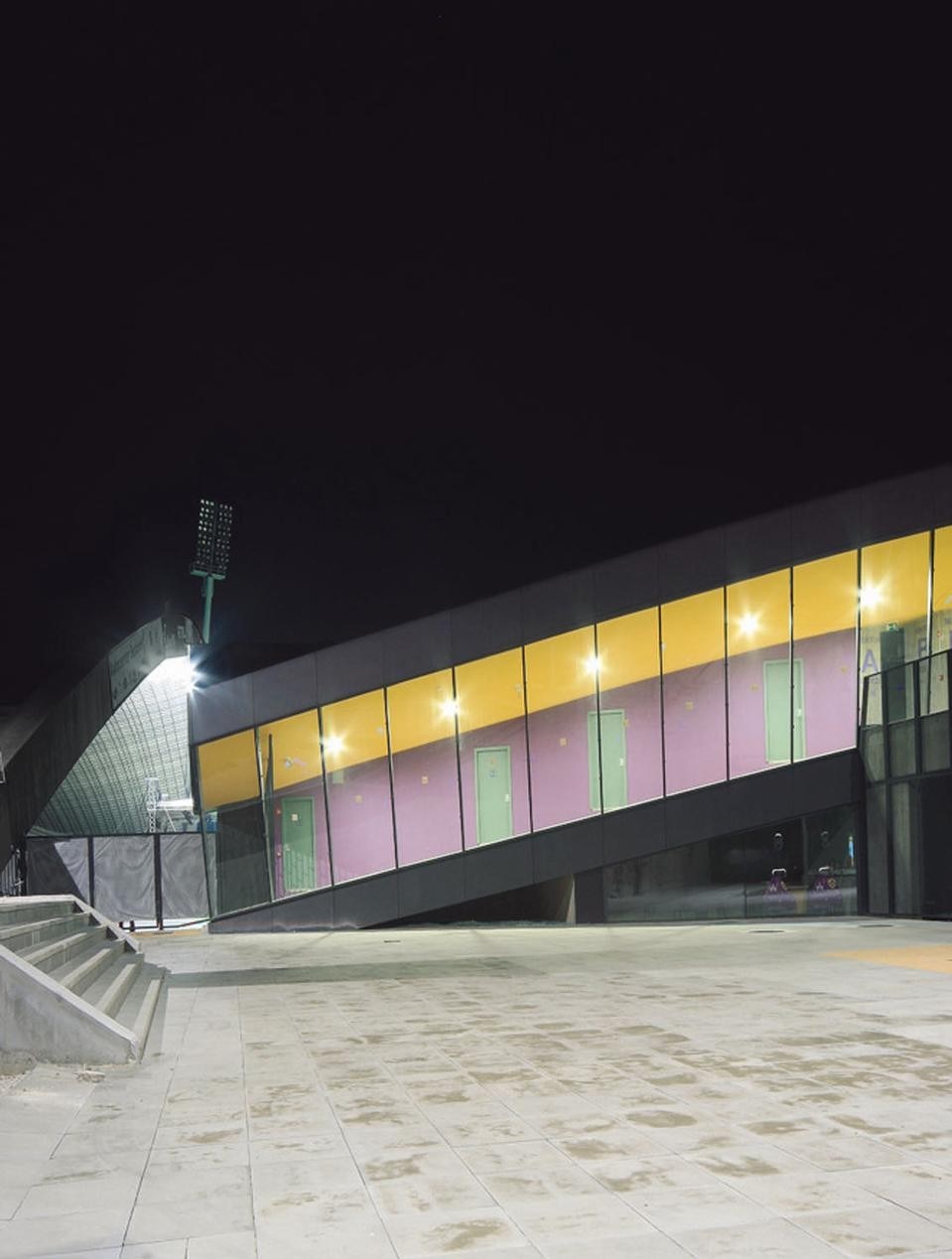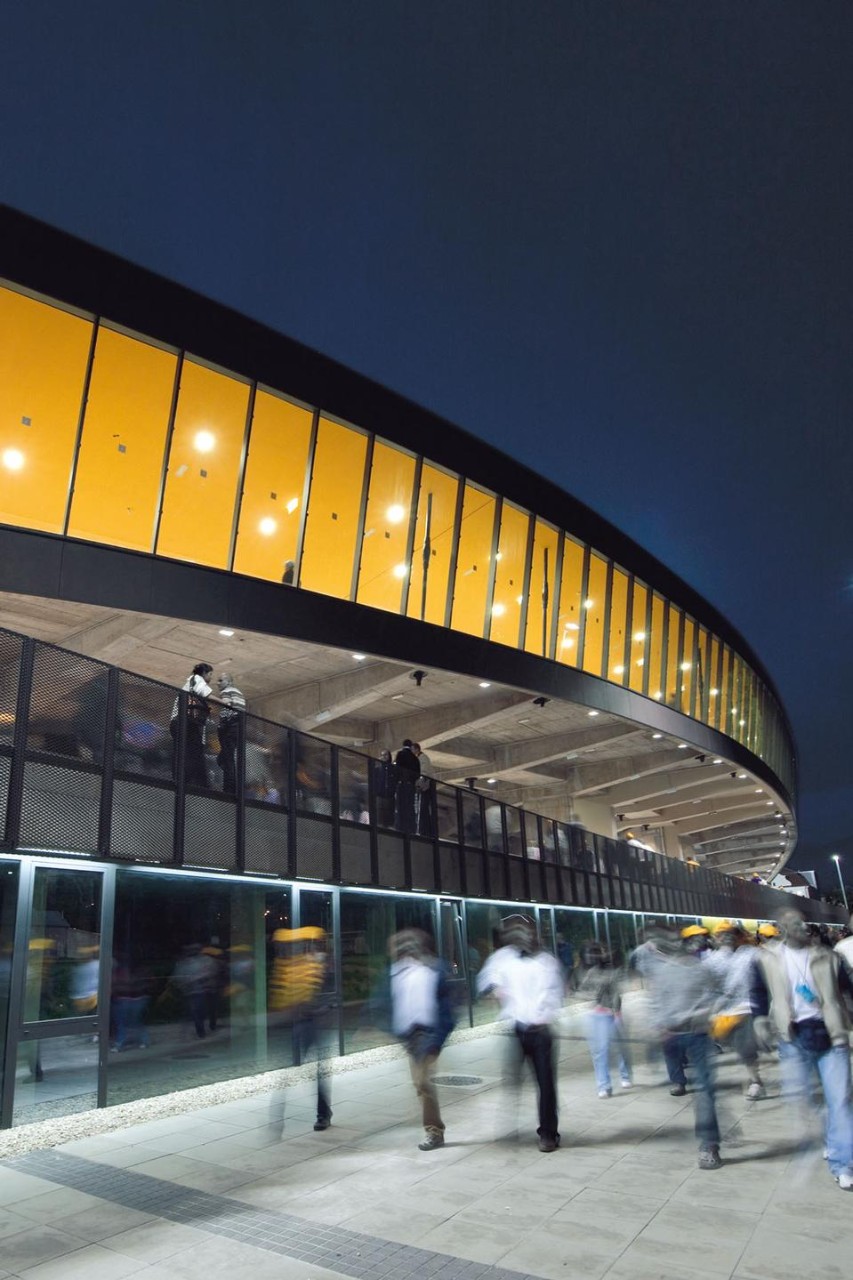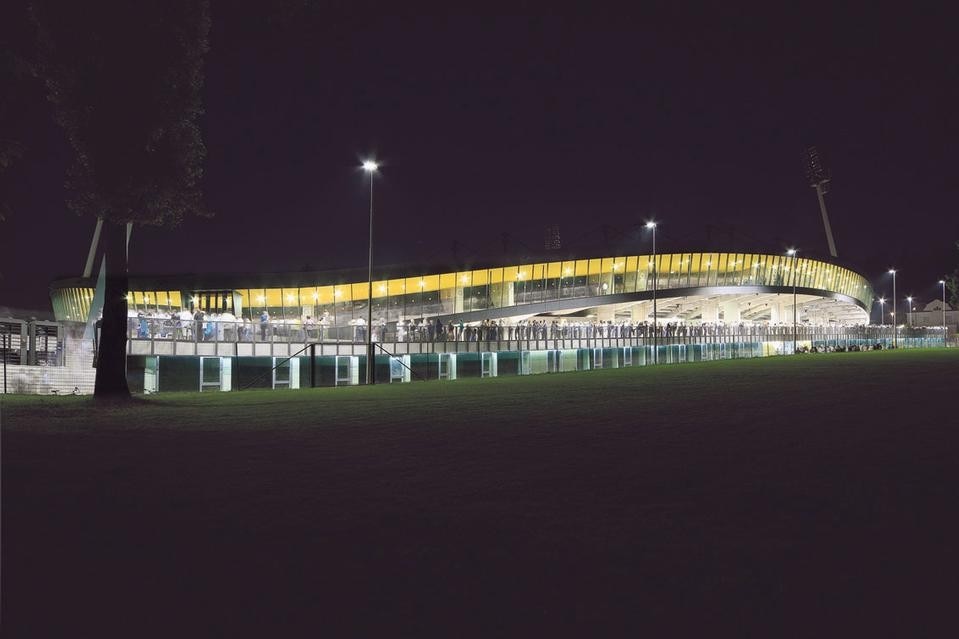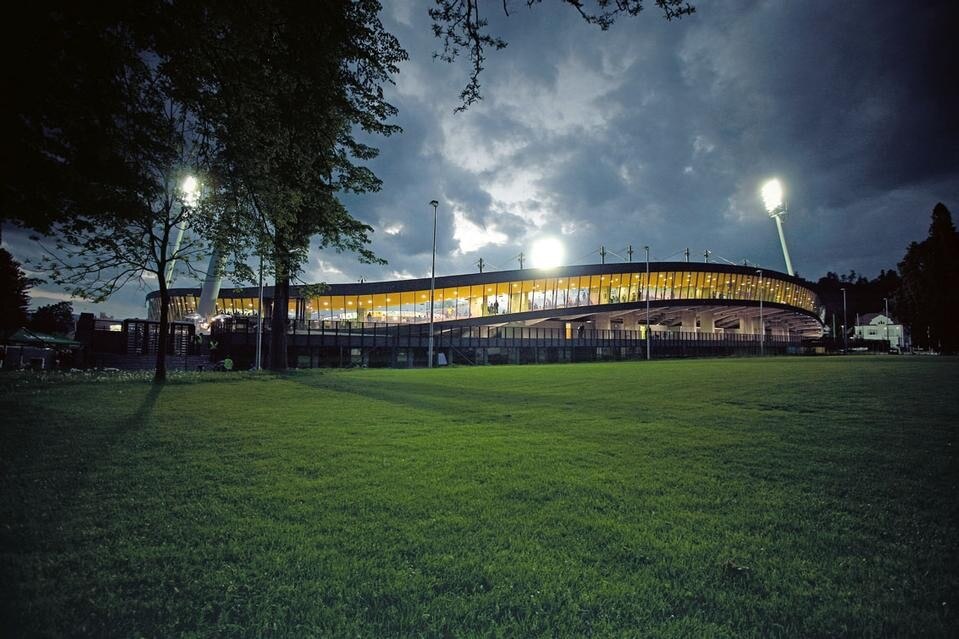Apart from being photogenic, Ofis’s architectural output has always been distinctive because of its provokingly ingenious solutions and achievements, sparking just as much enthusiasm from casual passers-by as from experts in the field. With their simple and understandable architectural gags, the buildings of Ofis arhitekti exploit ingenious ideas to provide outfitting for generic volumes. The loggias of their housing in Izola are pasted onto the usual blocks like colourful beehive fronts; the housing complex in the country town of Cerklje is clad with vernacular wooden joints. Due to these likable architectural insertions, the constructions of the Slovenian studio create architectural remixes that would convince even the most chauvinistic traditionalists to invest in contemporary architecture in their home garden.
Surprising architectural elements can’t be missed at Maribor stadium either. A translucent ring is ignited for evening matches, like a kind of orbital spacecraft parked on a platform that is hardly big enough. The continuously curved surfaces that characterise the stadium are something Ofis has tried to develop since they won the competition for the City Museum in Ljubljana in the mid-1990s. The museum was designed as a set of five glass curves that would connect the fragmented wings of the old palace by means of a car ramp, although the original idea was later dissolved by demands for considerable changes in the final project. The curves of the stadium in Maribor, on the other hand, are now complete according to the proposal that won the 1998 competition. Ofis’s work deviates from the typical architectural products that come from their country, where, with few exceptions, architecture is traditionally bound to easy-to-handle polyhedral geometrical forms. In Maribor, the ring is formed by the curved roof and the brim of the spectator stands that bridge the generic pedestal with public facilities.
The project clearly shows the ambition to mark the town’s future for a period longer than one generation of football players. But at the same time the new construction respects the existing historical continuity. The curve of the new roof actually represents an upgraded version of the concrete arc spanning over the old spectator stands, designed by Slovenian modernist architect Boris Pipan in the 1960s. The 1960s have been praised a lot recently as the golden age of Slovenian architecture. But here this historical period serves as the donor of genetic material, which has been used to design a new hybrid, even more complex and advanced than the original. The Maribor stadium is an example of how dealing proactively with architectural heritage can stimulate the development of exceptional and useful new designs. New architecture meets that of the past with awareness, devoid of restraint or false respect, without even touching the old. Together the mew and the old form an invaluable and unique architectural specimen.
Another success of the project is the redesign of the open space around the stadium, which now serves as a large new public space. Even though the stadium has only replaced an old football ground, the project as a whole represents an important public facility that will be used by many citizens. Its catching architectural appearance contributes considerably to the enjoyment of football fans, but it is also a pleasurable addition to the city for those who know nothing of the sport. The opening match was a chance to observe how the intelligent and interesting design of a public building can make people enthusiastic about new architecture. The stadium immediately became one of the most famous new buildings in Maribor and started to live its life as a city icon, representing the historical continuity of sport, architecture and innovation.
